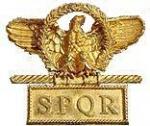И още плява - дас ист фантастиш?!
The doctrine of sacral kingship dictated that the ruling family be of royal blood and descent, a continuation of earlier beliefs of royal legitimacy in which there was a chain of dynasties transferring kingship from one family to another (DKM 2921.17/. Since there was no clear line of royal descent from earlier rulers to the Sasanid family, these relations were invented and descent was claimed from the last Achaemenian monarch Darius III Codomannus (Phl: Daray/. This claim of royal ancestry was introduced into the founder legend of Emperor Ardeshir I which appears to have been elaborated by the priesthood and wandering minstrels /KAP 2.4-10, 15.1-8/. A claimant to the throne had to be a direct member of the royal family, a doctrine placed by Tha'alibi in the words of Gurdoya, the sister and wife of the Persian general Bahrain Chobin who rebelled against Xusro II (Tha'alibi 683/.24 A similar indictment of rebellion against the monarchy is voiced by the elder son of Shahrburaz, a rebellious general under An dashir III /Tha'alibi 733-34/. Islamic literature also indicates that Iranian royal blood was sacred and that the personal sanctity of Sasanian kings ought not to be violated. Burzmihr, whose father Sukhra had been slain by Emperor Kuwadh I, was prevented by his belief in the sanctity of royal blood from slaying Emperor Kuwadh when the latter was deposed and placed under Burzmihr's authority /Tha'alibi 509/. Hamza al-Isfahani mentions that to his day the people of Marw referred to the descendants of Mahoe, the governor of Marw who betrayed the last Sasanian monarch Emperor Yazdegerd III, and hence caused the king's death, as khuda-kushan "king-killers" (Isfahani 63). Ibn Batriq also mentions the sanctity of the royal blood of Sasanian rulers (Batriq 176/. It appears that the Sasanian monarch was usually inaccessible to visitors and separated from their gaze. He sat on the throne with a veiled face or behind a curtain,25 perhaps following Achaemenian court practice (Xenophon Agesilaus 9.12; Herakleides 4.145-46).
The doctrine of sacral kingship dictated that the ruling family be of royal blood and descent, a continuation of earlier beliefs of royal legitimacy in which there was a chain of dynasties transferring kingship from one family to another (DKM 2921.17/. Since there was no clear line of royal descent from earlier rulers to the Sasanid family, these relations were invented and descent was claimed from the last Achaemenian monarch Darius III Codomannus (Phl: Daray/. This claim of royal ancestry was introduced into the founder legend of Emperor Ardeshir I which appears to have been elaborated by the priesthood and wandering minstrels /KAP 2.4-10, 15.1-8/. A claimant to the throne had to be a direct member of the royal family, a doctrine placed by Tha'alibi in the words of Gurdoya, the sister and wife of the Persian general Bahrain Chobin who rebelled against Xusro II (Tha'alibi 683/.24 A similar indictment of rebellion against the monarchy is voiced by the elder son of Shahrburaz, a rebellious general under An dashir III /Tha'alibi 733-34/. Islamic literature also indicates that Iranian royal blood was sacred and that the personal sanctity of Sasanian kings ought not to be violated. Burzmihr, whose father Sukhra had been slain by Emperor Kuwadh I, was prevented by his belief in the sanctity of royal blood from slaying Emperor Kuwadh when the latter was deposed and placed under Burzmihr's authority /Tha'alibi 509/. Hamza al-Isfahani mentions that to his day the people of Marw referred to the descendants of Mahoe, the governor of Marw who betrayed the last Sasanian monarch Emperor Yazdegerd III, and hence caused the king's death, as khuda-kushan "king-killers" (Isfahani 63). Ibn Batriq also mentions the sanctity of the royal blood of Sasanian rulers (Batriq 176/. It appears that the Sasanian monarch was usually inaccessible to visitors and separated from their gaze. He sat on the throne with a veiled face or behind a curtain,25 perhaps following Achaemenian court practice (Xenophon Agesilaus 9.12; Herakleides 4.145-46).



 Това, че не ти изнася, е друга работа.
Това, че не ти изнася, е друга работа.


Comment